Films with theme "Documentary films about the visual arts", sorted by revenue

An Essay on Matisse (1996)
Origin USA
Genres Documentary
Themes Documentary films about the visual arts, Documentaire sur une personnalité
 , 1h26
, 1h26Origin USA
Genres Documentary
Themes Documentary films about the visual arts, Documentaire sur une personnalité
Actors Carol Channing, Lauren Bacall, Barbara Walters, Joan Collins, Julie Andrews, Robert Goulet

Red Jacket (1998)
, 45minutesThemes Documentary films about the visual arts, Documentaire sur une personnalité
The documentary charts the life of Tretchikoff, featuring contributions with public figures and Tretchikoff himself. The documentary is titled Red Jacket, Tretchikoff memorably recalled his war-time lover and muse, Lenka wearing a red jacket when first meeting her. She would later pose as the model in his painting titled Red Jacket.
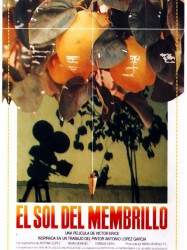
Dream of Light (1992)
, 2h18Directed by Victor Erice
Genres Drama, Documentary
Themes Peinture, Documentary films about the visual arts, Documentaire sur une personnalité
The film begins by showing Antonio López García as a very meticulous painter. He drives in pegs to mark his stance, hangs a weight and uses strings to determine the symmetry and center of his painting. His first attempt starts out peacefully but he soon encounters problems due to the weather and the size of his canvas. As García and a friend discuss Michelangelo's The Last Judgement, painted when Michelangelo was in his 60s, which García is fast approaching, the film's subject takes shape as the relationship between the artist's work and his own mortality. García's future attempts are much more rushed and frantic as he struggles to compete with the weather, the fleeting sun and the rotting and weighed down fruit in maintaining his vision.

Frank and Ollie (1995)
, 1h29Origin USA
Genres Biography, Documentary
Themes Films about films, Documentary films about business, Documentary films about the visual arts, Documentary films about the film industry, Documentaire sur une personnalité, Children's films
Actors Franklin Thomas, Ollie Johnston, Glen Keane
Bien avant la révolution technologique de l'animation assistée par ordinateur et ses possibilités infinies, la magie de l'animation s'écoulait du crayon de deux des meilleurs animateurs que la Walt Disney Company n'aie jamais connu : Frank Thomas et Ollie Johnston. Talentueux dessinateurs de Bambi, Pinocchio, La belle et le clochard ou Le livre de la jungle, ils sont devenus des modèles pour toute une génération de nouveaux animateurs, et notamment ceux de succès récents comme Le roi lion. Leur génie créatif a rendu à tout jamais le nom de Disney synonyme d'excellence dans l'animation et ses attributs que sont la belle musique et les scénarii intemporels. Ils nous livrent ici leurs secrets, pensées, inspirations et réflexions sur la genèse de films d'animation parmi les plus beaux de l'histoire du cinéma
 , 1h12
, 1h12Directed by Damian Pettigrew
Origin France
Genres Documentary
Themes Documentary films about the visual arts, Documentaire sur une personnalité
Actors Philippe Noiret
The feature length documentary highlights the painter's complex creative process with rare footage of the artist at work in his studio in the Swiss mountain village of Rossinière. Conversations with Balthus and his wife Setsuko, his daughter Harumi, his sons Stanislaus and Thadée, interviews with art critics Jean Leymarie, Jean Clair, Pierre Rosenberg, and James Lord, and with French painter François Rouan (who often assisted Balthus during his tenure at the Villa Medici), contribute to form a psychological portrait of a secretive and controversial artist.
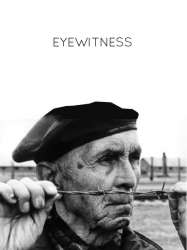
Eyewitness (1999)
Origin USA
Genres War, Documentary
Themes Films about racism, Films about religion, Documentary films about the visual arts, Documentary films about racism, Documentary films about law, Documentary films about war, Documentary films about historical events, Documentaire sur une personnalité, Documentary films about religion, Political films, Films about Jews and Judaism, Documentary films about World War II

King Gimp (1999)
, 39minutesOrigin USA
Genres Documentary
Themes Documentary films about the visual arts, Documentaire sur une personnalité, Films about disabilities
Le film raconte la vie de Dan Keplinger, un artiste du Maryland infirme moteur cérébral.
 , 30minutes
, 30minutesDirected by Tom Neff
Origin USA
Themes Documentary films about the visual arts, Documentaire sur une personnalité
Actors Lauren Bacall
This short documentary film on the life of Louise Dahl-Wolfe draws upon her art and her personality. The documentary reviews how Dahl-Wolfe "discovered" Lauren Bacall, who at the time was a young actress (seventeen years-of-age) and worked as a model. It was Dahl-Wolfe's photos of Bacall that film producer Harry Warner saw, and subsequently asked Bacall that she come to Hollywood for a screen test. As a result, Bacall was cast opposite Humphrey Bogart in the film To Have and Have Not (1944).

Picasso: Magic, Sex & Death (2001)
, 2h33Origin United-kingdom
Genres Documentary
Themes Documentary films about the visual arts, Documentaire sur une personnalité
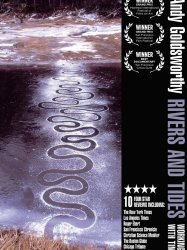
Rivers and Tides (2001)
, 1h30Origin United-kingdom
Genres Documentary
Themes Documentary films about the visual arts, Documentaire sur une personnalité, Documentary films about nature
Portrait de Andy Goldsworthy, un artiste qui s'est spécialisé dans des sculptures éphémères faites à partir d'éléments de la nature.

Ansel Adams (2002)
, 1h40Directed by Ric Burns
Genres Documentary
Themes Documentary films about the visual arts, Documentaire sur une personnalité
Actors David Ogden Stiers
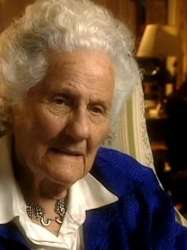
Throwing Curves: Eva Zeisel (2002)
, 1hOrigin USA
Themes Documentary films about the visual arts, Documentaire sur une personnalité
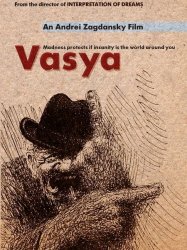
Vasya (2002)
, 1hOrigin USA
Themes Documentary films about the visual arts, Documentaire sur une personnalité

The Five Obstructions (2003)
, 1h30Directed by Lars von Trier, Jørgen Leth
Origin Danemark
Genres Drama, Documentary, Anthology film
Themes Films about films, Seafaring films, Films about sexuality, Transport films, Films about prostitution, Documentary films about business, Documentary films about the visual arts, Documentary films about the film industry, Documentaire sur une personnalité, Documentary films about prostitution, Documentary films about films
Actors Patrick Bauchau, Jørgen Leth, Lars von Trier, Alexandra Vandernoot, Anders Hove, Bent Christensen
Lars von Trier prétend que le court-métrage Det perfekte menneske de Jørgen Leth sorti en 1967 est son film préféré. Dans le but de lui rendre hommage, mais d'une manière perverse, à la fois manipulatrice et créatrice, il propose à l'auteur du film original, son compatriote Jørgen Leth, de détruire et de reconstruire autrement ce court-métrage. Il défie Leth d'en tourner cinq remakes. Pour chaque projet, il lui impose de nouvelles « obstructions », consignes, restrictions, interdictions plus ou moins arbitraires, l'obligeant à repenser l'histoire, l'esthétique et les personnages de son film. Il s'ensuit à chaque épreuve un feed back entre les deux hommes où Lars von Trier, dans une sorte de position de « directeur de conscience », à la limite de l'humiliation, semble prendre à cœur de déconstruire et détruire ce que Jørgen Leth a réalisé.
 Connection
Connection